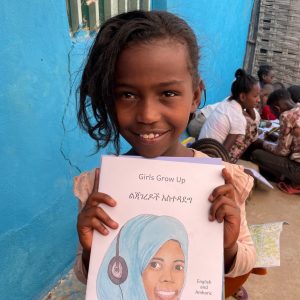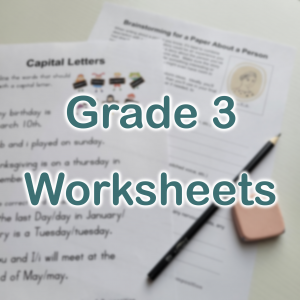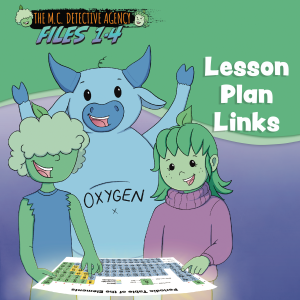The Power of Literature
By: Elizabeth Kamath
Note: this post contains Amazon affiliate links. We may receive payment if you buy something or take an action after clicking one of these. This goes directly toward supporting Hewitt and enabling us to create more free resources.
I have always believed in the power of literature to help us to understand, to empathize, to open our hearts and minds. Literature allows us to see further than our own household, our own neighborhood. It allows us to experience the lives, thoughts, and emotions of people in circumstances very different from ours. Conversely, it’s also important that all children read about characters who they can identify with – who share their culture or religion, for example.
These books focus on groups of people who are often discriminated against in our society. Not all these books are specifically about prejudice or oppression. Some are pleasant stories whose characters happen to be from one of these groups. Others give peeks into various cultures in other ways (such as folk tales). Some touch on history that we must never forget.
I have read every book on this list (and it will grow as I read more). I have roughly divided them by age, but I think even the picture books can be read and appreciated by all ages. Also, I can attest that my ten-year-old has read (or would be allowed to read) every book listed below the Young Adult level. My 15-year-old has read (or would be allowed to read) every book in this list. But, I recognize I am especially liberal in what I allow my children to read. I have included a few warning notes, but if you have any question about the appropriateness of a book for your child, either because you take a stricter approach or because your child is especially sensitive, please preview the book yourself.
If you wish to start a conversation with your children about Black Lives Matter, I suggest these titles (read the full descriptions below):
-
- My Brother Martin: A Sister Remembers Growing Up with the Rev. Dr. Martin Luther King Jr., by Christine King Farris (for younger and elementary school age)
Note: If you would like to take a closer look at the books, clicking on the title will take you to the book on Amazon.
Picture Books for the very young
Preschool to First or Second Grade
- The Bee Tree, by Patricia Polacco – Mary Ellen’s grandfather takes her on a hunt for a bee tree, and the whole village joins them.
- Grandfather’s Journey, by Allen Say – This book about the author’s grandfather’s journey from Japan to America is a wonderful story with insight into how it feels to immigrate to a new country.
- The Hello, Goodbye Window, by Norton Juster – A child describes his delightful stay with his grandparents.
- Joseph Had a Little Overcoat, by Simms Taback – A man continues to get use out of his clothing as it gets more worn and ragged, until he learns he can make something out of even nothing.
- The Old Woman Who Named Things – An old woman who has outlived all her friends finds a new one when a puppy shows up at her house.
- Oskar and the Eight Blessings, by Tanya Simon – A Jewish boy arrives alone in New York in 1938 as a refugee from Kristallnacht. As he looks for his aunt, he experiences acts of kindness from others welcoming him to this new home.
- The Snowy Day, by Ezra Jack Keats – This book is such a classic there are postage stamps of the illustrations. I enthusiastically recommend all of Keats’s sweet, sensitively written books (Whistle for Willie, Pet Show!, A Letter to Amy, etc.).
- Tree of Cranes, by Allen Say – In Japan, a boy’s mother, who lived for awhile in America, gives him his first Christmas. Again, Say captures the feelings of straddling two cultures.
- Umbrella by Taro Yashima – A little girl gets the gift of an umbrella and can’t wait to use it.
- Wabi Sabi, by Mark Reibstein – A delightful introduction to the Japanese philosophy of Wabi Sabi, seeing the beauty in imperfection.
- Mommy’s Khimar, by Jamilah Thompkins-Bigelow – A young girl loves trying on her mother’s hijabs. They are both a spur for her imagination and a reminder of her mother’s love.
- Say Hello, by Rachel Isador – Carmelita and her mother go on a walk and say hello to their friends and neighbors in a variety of language.
- Whoever You Are, by Mem Fox – This sweet and simple book reminds children that underneath differences of color, language, and culture, we are all human, with the same emotions and needs.
Picture Books for the slightly older
Early – Middle elementary (or read-aloud for younger)
- Kibitzers and Fools: Tales My Zayda Told Me, by Simms Taback – Thirteen wonderful Jewish tales with a smattering of Yiddish thrown in for good measure. As with Joseph Had a Little Overcoat, Taback’s illustrations are colorful and fun.
- La Mariposa by Francisco Jimenez – Francisco feels alienated at school because he cannot speak English yet and is not allowed to speak Spanish. He takes comfort in his ability to draw.
- The Latke Who Couldn’t Stop Screaming, by Lemony Snicket – Subtitled “A Christmas Book,” this hilarious story features a latke who keeps trying to explain why Hanukkah isn’t the same as Christmas.
- Mufaro’s Beautiful Daughters: an African Tale, by John Steptoe – A multiple-award-winning book inspired by a traditional African folk tale. The drawings are beautiful and reflect the nature and culture of Zimbabwe. The characters’ names are all words in Shona, a language of Zimbabwe. This was a Reading Rainbow book.
- My Brother Martin: A Sister Remembers Growing Up with the Rev. Dr. Martin Luther King Jr., by Christine King Farris – Martin Luther King’s sister tells a fascinating story about the young King and their experiences growing up in the South.
- The Patchwork Quilt by Valerie Flournoy – A multigenerational family work together on a quilt whose fabric is a history of their lives. This was a Reading Rainbow book.
- Preaching to the Chickens: The Story of Young John Lewis, by Jabari Asim – A beautifully illustrated look at the childhood of civil rights leader and Georgia congressman John Lewis.
- Sequoyah, by James Rumford – The fascinating story of Sequoyah and his work to create a Cherokee writing system.
- The Arabic Quilt: An Immigrant Story, by Aya Khalil – Kanzi is from Egypt and is nervous about fitting into her new American school. But with the help of her teacher, the other children come to accept her and especially enjoy their exposure to a new language. As her teacher says, “We can speak non-English languages and still be American.
- The Bell Rang, by James E. Ransome – The words in this book are simple enough for younger readers, but the topic is something that should be shared with a parent. This story is a simple but powerful look through a child’s eyes at the days of slavery that begin each morning when the overseer rings his bell, and what happens when that child’s brother runs off to be free.
- Fearless Mary, by Tami Charles – The true story of Mary Fields, a formerly enslaved person who became the first Black woman to drive a stagecoach in a time and place where neither women nor Blacks were given such jobs. The story is simply told, but Mary – who fights off thieves and wolves with her pet eagle – is a fascinating person.
- Freedom Bird, by Jerdine Nolen – Two enslaved children tend to a fallen bird who later helps them escape to the West. This story is written at a higher level than most picture books, and while well worth reading, would best be done as a read-aloud with discussion. This is an interesting blending of the historical and the fantastic.
- Henry’s freedom Box, by Ellen Levine – The true story of Henry Brown, an enslaved man who determined to be free after his wife and children were sold away from him. With the help of friends, he is shipped to the North, and freedom, in a crate.
- Let the Children March, by Monica Clark-Robinson – Most people don’t know that Black children and teenagers also marched for Civil Rights in the 1960s, and were also attacked by the police and arrested. This book tells that story and encourages children to think of how they can stand up for their beliefs and help others.
- Mae Among the Stars, by Roda Ahmed – A brief look at the childhood determination of Mae Jemison who would grow up to become the first black female astronaut. This story reminds children that even when some adults don’t believe in their dreams, they shouldn’t give up on them.
- Planting Stories, by Anika Aldamuy Denise – The true story of Pura Belpré. Ms. Belpré immigrated to New York City in 1921 from Puerto Rico. Once here, she began telling, then writing, folktales from her homeland, eventually spreading these lovely seeds of stories far and wide.
- Stepping Stones, by Margriet Ruurs with illustrations by Nizar Ali Badr – This bilingual book (English and Arabic) tells the story of Rama and her family who flee a war-torn region for a new home across the sea. This book is a beautiful reminder that we all want to “sing our songs” and “dance our dances” in peace. The story is lovely, and the illustrations – done in stones and pebbles by a Syrian sculptor – are exquisite.
- What Is Given from the Heart, by Patricia McKissack – One of my favorite picture books on this list, this is the touching, uplifting story of a boy and his mother who are down on their luck. She teaches him about the importance of giving and community. With lovely pictures by April Harrison.
Short Chapter Books
Mid – Late Elementary (or read-aloud for younger)
- All-of-a-Kind Family, by Sydney Taylor – The author draws on her own childhood to tell the story of a Jewish family with five daughters in early 19th century New York City. This is a delightful, light-hearted book.
- At Her Majesty’s Request: An African Princess in Victorian England, by Walter Dean Myers – The true story of a girl from an Egbado village who is saved from execution and taken to England where Queen Victoria personally oversees her welfare. Contains scenes of violence.
- The Earth Dragon Awakes, by Laurence Yep – Two boys and their families – one white, one Chinese – fight to survive during the San Francisco earthquake of 1906. This book provides some excellent insight into the Chinese immigrant experience at the turn of the last century.
- The Family Under the Bridge, by Natalie Savage Carlson – In France, a homeless man befriends a newly homeless family. He also introduces them to his Romany friends.
- Morning Girl, by Michael Dorris – A lyrical look at the life of a Taino (Native American) family right before Columbus’s men step ashore.
- How Many Spots Does a Leopard Have? by Julius Lester – A beautifully illustrated collection of a dozen folk tales from Jewish and African traditions. The African stories come from a variety of cultures including the Efik-Ibibio, Xosa, Basuto, Fan, Mende, Hausa, Masai, Ngoni, and Yarwin-Mehnsonoh.
- Rickshaw Girl, by Mitali Perkins – A Bangladeshi girl must try to find work in a culture that says work is only for men and boys.
- Mangoes, Mischief, and Tales of Friendship: Stories from India by Chitra Soundar – These eight stories inspired by Indian tales follow ten-year-old Prince Veera and his friend Suku as they settle villagers’ disputes, solve mysteries, and even dispense justice. The tales are light-hearted but at the same time underscore the importance of friendship, fairness, and kindness.










